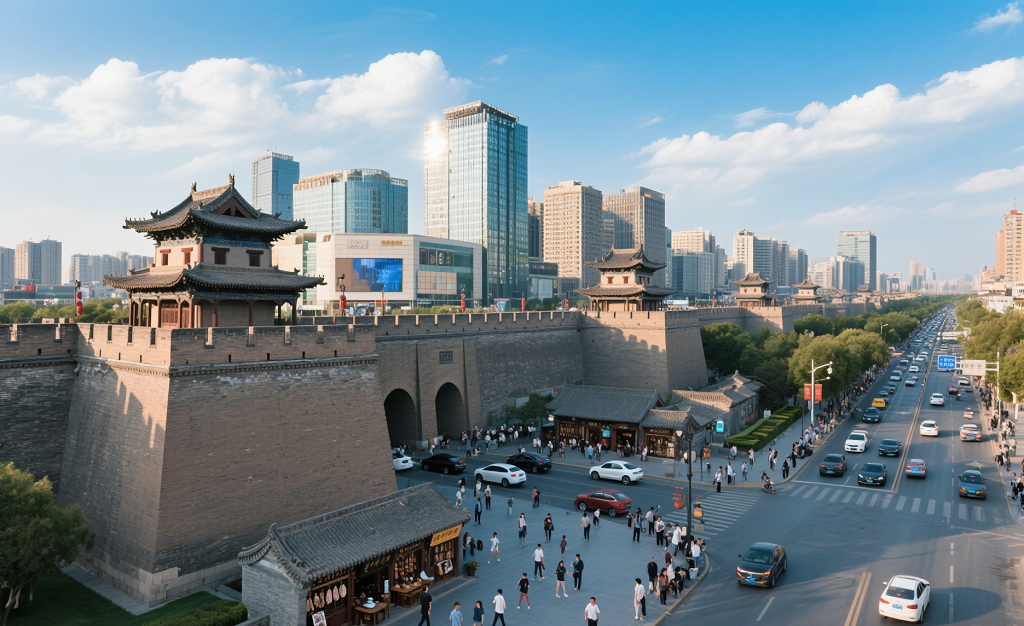
Xi'an's Population Dynamics in 2025: A Closer Look at Data Changes
In 2025, Xi'an, the capital city of Shaanxi Province and a crucial metropolis in northwestern China, continues to exhibit significant shifts in its population landscape. These changes, backed by comprehensive data, not only mirror the city's development but also hold implications for its future planning.
Population Growth Trends
According to the latest data, by the end of 2024, Xi'an's permanent resident population reached 13.1676 million. This figure shows a notable increase compared to previous years. In 2023, the population was 13.0782 million, with an increment of 0.0823 million from 2022. And in 2024, the city witnessed an even larger growth of 0.0894 million. This growth rate has enabled Xi'an to outperform many northern cities in terms of population increment in 2024, ranking at the top among them.
Natural Growth and Migration Impact
When it comes to the components of population growth, natural growth and migration both play important roles. In 2024, Xi'an's birth rate was 8.62‰, leading to 0.1135 million new - borns, while the death rate was 7.82‰, resulting in 0.1030 million deaths. The natural growth rate stood at 0.80‰, which, although higher than the provincial level (-0.69‰) and the national level (-0.99‰), only contributed about 10.5 thousands to the total population increment. This indicates that a significant part of the population growth is driven by migration.
In previous years, the natural growth rate also showed certain fluctuations. For example, in 2023, the birth rate was 8.22‰, the death rate was 7.86‰, and the natural growth rate was 0.36‰. Comparing with 2024, the birth rate increased by 0.4‰ in 2024, which could be related to various factors such as changes in family planning policies or shifts in social attitudes towards child - bearing.
Urban - Rural Population Distribution
In terms of urban - rural population distribution, the urbanization process in Xi'an has been advancing steadily. In 2023, the urban population was 10.4469 million, accounting for 79.88% of the total population. As the city continues to develop, more and more people are moving from rural areas to urban centers in search of better job opportunities, educational resources, and living standards. This trend is expected to continue in the future, with the urbanization rate likely to increase further as the city promotes urban - rural integration and invests more in urban infrastructure and public services.
Demographic Structure
Xi'an's demographic structure also reveals some interesting aspects. The proportion of the working - age population (15 - 64 years old) remains relatively high, which provides a strong labor force for the city's economic development. However, similar to many other Chinese cities, Xi'an is also facing the challenge of an aging population. The proportion of the population aged 60 and above is gradually increasing, putting pressure on the city's pension and healthcare systems.
For instance, in 2023, although the exact data on the age - specific population distribution of the elderly was not provided in the given materials, the general trend of an aging population is clear. In response, the local government has been implementing a series of policies, such as improving the elderly care service system and promoting the development of the elderly - care industry, to address this issue.
Impact on the City
The continuous growth of Xi'an's population has a profound impact on various aspects of the city. Economically, the increasing population, especially the influx of young and skilled workers, provides strong impetus for the development of high - tech and innovative industries. It also boosts consumption, driving the growth of the service sector. Socially, the growing population brings challenges in terms of housing, education, and public services. The demand for affordable housing, for example, is on the rise, and the education system needs to be expanded and improved to accommodate more students.
In conclusion, Xi'an's population dynamics in 2025, as reflected by the data, present a complex picture of growth and change. By effectively managing these population - related factors, Xi'an can continue to thrive and maintain its position as a key economic and cultural center in northwestern China.
More population information please check:2025 Xian City Population Data and Population Census data and AGE PYRAMID - ChinaCensus-ChinaCensus
reference content2025年[陕西]西安市人口第七次人口普查和历史人口数据 年龄金字塔结构 民族组成情况-红黑人口库 (hongheiku.com)
 ChinaCensus
ChinaCensus